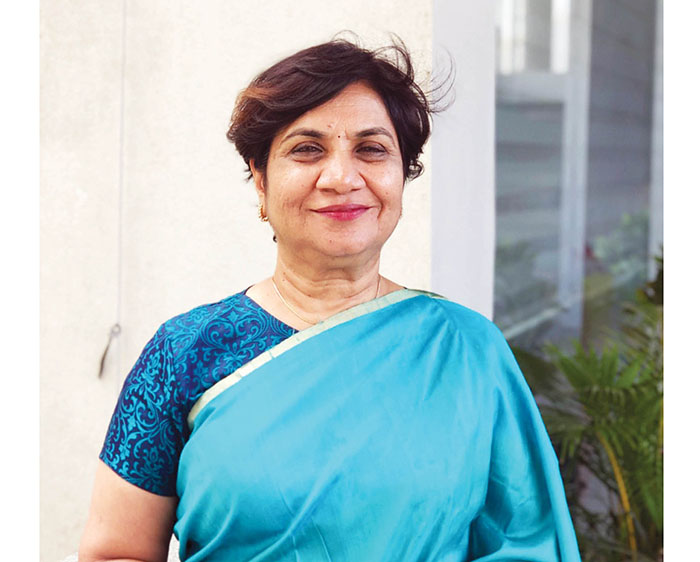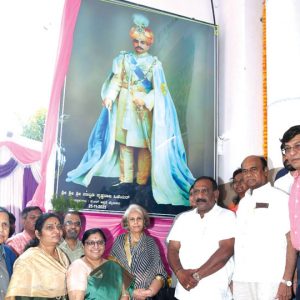By Dr. Shalini R. Urs, Founder-Chairperson, MYRA School of Business & Founder-Executive Director Emerita, International School of Information Management, University of Mysore
Global Village, a term coined in the 1960s, became a reality with the arrival of the Internet and the Web in the mid-1990s. It created a truly democratic platform, a vanity press, and an Infotopia (Information Utopia).
The advent of Web 2.0 in the mid-2000s, which enabled two-way interactions, allowing readers/users to comment and interact, significantly enhanced this digital landscape. It transformed the top-down information flow into a dynamic, user-generated content channel. However, this shift also unintentionally led to a new reality: everyone feeling and believing themselves to be experts on anything and everything, creating and spreading their versions of reality and worldviews. This phenomenon has ultimately consolidated and solidified the post-truth era, endangering democracies.
The post-truth era is real. It became “word of the year” by the Oxford Dictionary in 2016. Trump’s election in the US and the Brexit referendum in the UK in 2016, when objective facts were less influential than emotional appeal and personal belief, led to the proliferation of its usage.
Truth is a very complicated concept. Philosophers have studied and debated about it. According to the widely accepted Correspondence Theory, truth is when words correspond to an accepted or mutually available reality that can be examined and confirmed. This is also a commonsensical understanding of truth. McIntyre, the author of the book POST-TRUTH says it is an assertion of ideological supremacy and attempt to compel someone to believe something regardless of the evidence. While it is not entirely new, the 21st century is seized by the post-truth era.

Social Media, Fake News and Journalism
Social media that emerged around 2005 facilitated by Web 2.0, has become a force for the good, bad and the ugly in our lives. And has exacerbated the post-truth era by spreading fake news and disinformation. As such we’ve all become vulnerable to compulsive overconsumption, as Anna Lembke says in her book Dopamine Nation. This addictive behaviour adds fuel to the Fake news fire.
While journalism and journalists benefit from interaction with, challenges and ideas from readers, over time, social media has become an addictive trap. The foundational logic of online interaction and clickbait algorithms favour emotional extremes. Therefore, news sites began monetising clicks by feeding readers dopamine-inducing and titillating content for easy consumption.
Ironically some of the famous quotes used to describe the phenomenon themselves are half-truths. “A lie can travel halfway around the world while the truth is putting on its shoes.” Ironically this saying has been falsely attributed to Mark Twain, Winston Churchill and Thomas Jefferson. It’s most likely a twist on a Jonathan Swift line: “Falsehood flies, and truth comes limping after it.” Likewise, the old maxim of journalism: “If your mother says she loves you, check it out.” It is another quote which is a morphed version of the original.
There is no way that we can escape from this new emperor of malady of our times — fake news. There is enough evidence to say that “false information can reach more people, penetrate more deeply into social networks and spread much faster than any time in history.” A study done by Prevency, a German international consulting company for reputational risk and crisis management, found that disinformation costs the global economy $78 billion per year, including in share price loss, brand reputation management and investment in political disinformation camp.
Fighting Fake News: Tips & Tools for Fact-Checking
What can ordinary citizens do to combat falsity? Here are some tips and tricks to bust fake news:
Check the Source: Always verify the source of the information. If the source is unclear, pause and investigate further. “Forwarded many times” itself is a clue that indicates potential negative propaganda.
Be Wary of Forwarded Messages: Fake news can spread quickly through WhatsApp, leading to serious consequences. WhatsApp introduced the ‘forwarded’ & ‘forwarded many times’ tags to prompt users to critically reflect on the source of message before passing it on.
Corroborate the News: Compare the news with multiple credible sources to see if it is reported elsewhere.
Analyse Tone and Language: Tone and language can be easy give-aways of fake news. Recently, WhatsApp forwards falsely attributed favourable comments about Prime Minister Narendra Modi to a fictional Editor-in-Chief of The New York Times, Joseph Hope. The New York Times refuted these claims on its website. The tone and language of these forwards were clear indicators of fabrication.
Effective strategies to bust fake news
First Step – Pause and Search: When you encounter any news or posts, take a moment to pause and begin searching the web to check authenticity and corroboration.
Google Search – Basic Search: Often, a simple Google search will reveal whether credible sources such as news channels and media have corroborated the news. This helps minimise the risk of consuming and spreading fake news.
Fact-Checked Sources: A quick search can also lead you to fact-checked sources. For example, a viral video claiming suspects in the NEET paper leak case were hiding in a Congress Office was debunked by India Today Fact Check, which a simple Google search could reveal.
Parody Accounts: Verify the legitimacy of social media accounts. For instance, a parody account of a YouTuber falsely claimed that Lok Sabha Speaker Om Birla’s daughter cleared the UPSC exam without appearing for it. Checking the account details can often clarify such falsehoods.
Double-Check Social Media Accounts: Verify Twitter (X) handles, facebook accounts and other social media profiles. Parody and fake accounts can easily spread misinformation. For instance, YouTuber parody account mentioned above clearly states it is not affiliated with the original account.
Check Dates and Places: Be cautious of old videos or those from different geographies being passed off as recent events. For example, an old video from Assam was falsely attributed to Rahul Gandhi’s visit to Manipur, which was debunked by India Today Fact Check.
Fact-Checking Websites: Given the enormity of fake news and the efforts and resources required to combat it, many initiatives, projects and companies have emerged to focus on fact-checking.
The Reporters’ Lab at Duke University, a centre for journalism research in the Sanford School of Public Policy, maintains a database of 439 non-partisan fact-checking organisations worldwide.
The International Fact-Checking Network (IFCN), launched by the Poynter Institute in 2015, sets a code of ethics for fact-checking organisations. The IFCN reviews fact-checkers for compliance with its code and certifies those who pass the audit.
Global
1. Snopes (https://www.snopes.com/). 2. FactCheck.org (https://www.factcheck.org/). 3. PolitiFact (https://www.politifact.com/). 4. Full Fact (https://fullfact.org/). 5. AFP Fact Check (https://factcheck.afp.com/AFP-India). 6. True Media (https://www.truemedia.org/).
India
1. BOOM (https://www.boomlive.in/): BOOM is one of India’s first and leading fact-checking websites, committed to providing readers with journalistically verified facts. 2. Digital Forensics, Research and Analytics Centre (D-FRAC) (https://dfrac.org/en/). 3. WebQoof. 4. Factly (https://factly.in/).
While interest and concern about fake news are on the rise, media houses in India are not making concerted efforts to combat it. For example, India Today is the only channel that has an in-house fact-checking initiative and team and it is also certified by the International Fact-Checking Network (IFCN). We, as citizens, also need to step up our efforts. By using these tools and following some essential tips, we can become adept at identifying and debunking fake news.








Recent Comments